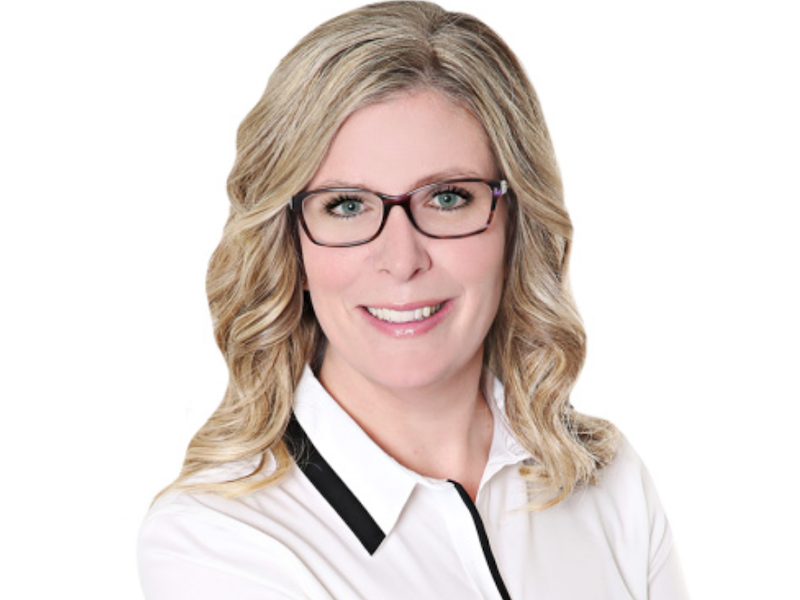
When Kristy Dickinson’s health took a turn eight years ago and she was diagnosed with a rare and complex disease, she stepped away from her role in recruitment.
Managing her chronic illness — from the appointments with her specialist, the information-gathering and sharing across three hospital jurisdictions and the medications and expenses — was too difficult to do alongside her day job.
“It was too overwhelming,” said Dickinson, founder and chief executive officer of Chronically Simple, at Benefits Canada’s 2022 Tech Insights conference in mid-April. “I was privileged to be in the position to be able to step away to focus solely on my health and I know that this is not the case for the majority of Canadians.”
Read: Employees with chronic diseases, caregiver responsibilities often shouldering invisible burden
Seventy per cent of the Canadian workforce lives with a chronic condition or chronic pain and 50 per cent of the Canadian population is caring for a loved one, she said. “The reality is that, likely, a significant number of your employees are trying to balance either managing their health or the care of a loved one while also managing their full-time job.”
That’s why Dickinson created Chronically Simple. The all-in-one health-care tracker, web portal and mobile app helps employees take an active role in managing their chronic illness or a loved one’s health. It helps the user manage their medications, appointments and health-care providers in one place. Every data point in the tool was developed by a patient or caregiver’s pain point or lived experience, said Dickinson.
“The goal of Chronically Simple is to ease the administrative burden that accompanies living with a chronic illness or disability so that the user can focus their time and energy on other things.”
The app can be configured with custom notifications for events, such as when users need to take their medication, and records actions taken with a time stamp for tracking purposes. The ability to track medical expenses is particularly key, said Dickinson, since people are able to submit these as part of their tax returns or for grants. Plan members can take photos of receipts for expenses such as parking at the hospital and upload them to the app.
Read: Chronically Simple streamlining health benefits information management
Chronically Simple has multi-user functionality, allowing plan members to see their own health-care information and that of their family members and is shareable. Users can invite family members or friends to be a part of their care team, but have full control over which parts of the app they have access to.
The app, which is also integrated with Apple Health and Google Fit, pulls activity and cardio information, blood glucose monitoring and body fat and houses it in the symptom tracker area of the app for plan members’ convenience.
Plan sponsors likely have employees who can be easily identified by their manager as living with an illness or disability and require support. However, they also have employees living with an invisible illness, just like Dickinson is. “You would have no idea I live with a rare genetic connective tissue disorder that has so far also given me four co-morbidities to manage, as well as an autoimmune disease,” she said.
Read: Plan sponsors get a primer on autoimmune conditions
She shared an example of a hypothetical employee named Susan who lives with psoriatic arthritis and ankylosing spondylitis on top of her demanding job and keeping her family life in check. Susan receives a biologic infusion every six weeks, along with her other medications and has multiple appointments with rheumatologists and other specialists. By using the Chronically Simple app available through her workplace benefits plan, Susan would be able to manage the administrative challenges that come with her chronic condition, as well as her daughter’s therapy, medical appointments and symptom trackers for anxiety and depression, all in the same tool.
Data from Chronically Simple demonstrates the challenges employees are dealing with, said Dickinson, noting two-thirds (66 per cent) of patients using the app to track medications are tracking at least two, while the remaining 34 per cent are tracking two or more, with the highest number being 36 medications.
Roughly 60 per cent of patients are tracking one to two expenses and 20 per cent are tracking more than five medical expenses. Fourteen per cent are managing their care across five health-care providers. And patients are using the app to manage a range of one to 18 monthly appointments.
“[Our app] allows our users to focus on what is most important: spending their time and focusing their energy on feeling well,” she said.
Read more coverage from the 2022 Tech Insights conference.
